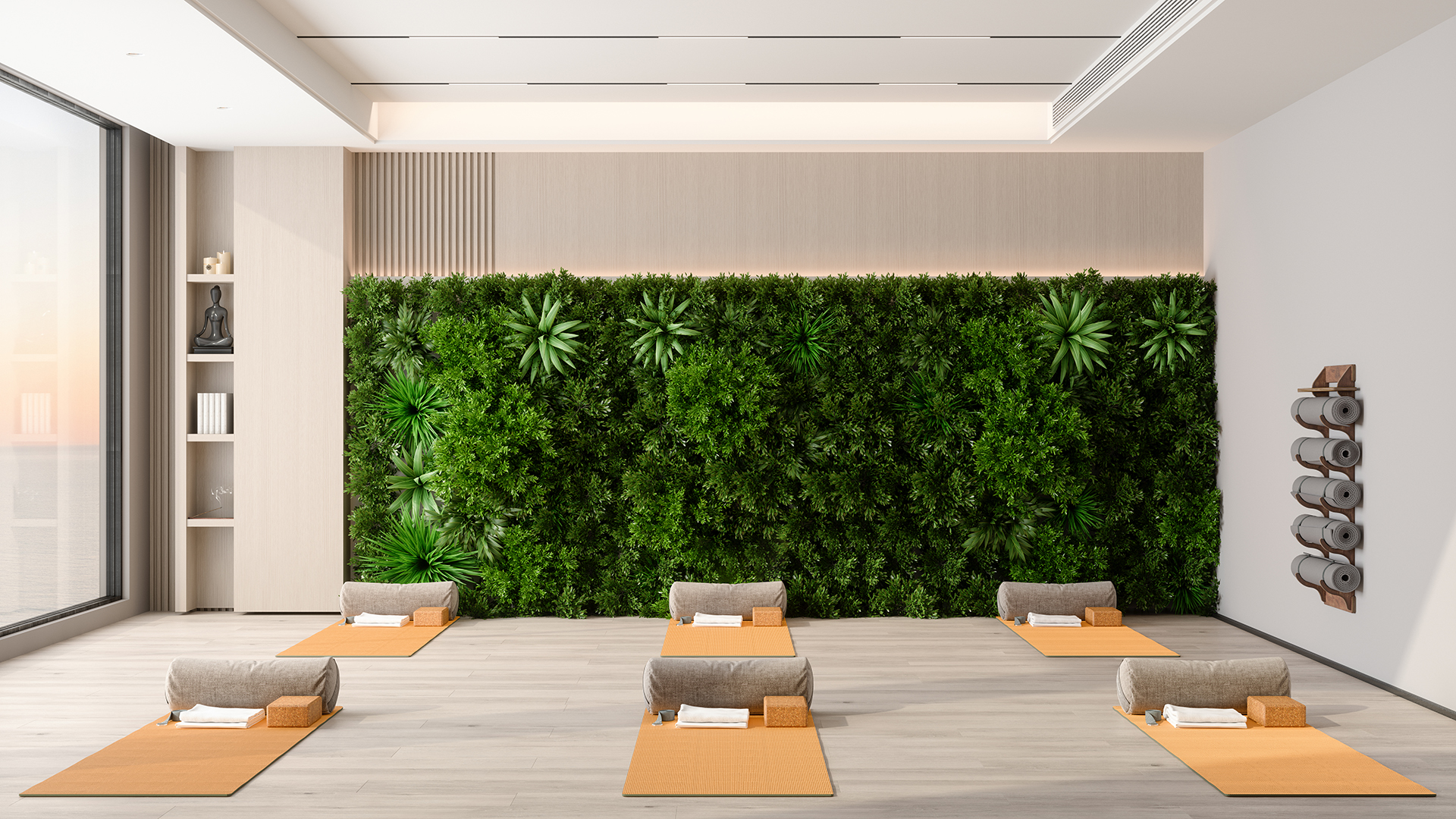According to Global Wellness Institute, the global wellness economy is booming, projected to reach $8.5 trillion by 2027. Recovery-focused spaces represent a significant and growing segment of this market. Recovery in the wellness world is more than simply taking a day off. It’s about purposefully giving the body and mind what they need to recharge. That might mean a cold plunge, a guided meditation, or simply moving in a way that restores balance and energy. As the owner or operator of a wellness business, understanding the importance of recovery and integrating thoughtful, recovery-driven design into your space can position your business as a leader and drive long-term success.
FROM ATHLETE TO RECOVERY ADVOCATE
I’ve experienced firsthand the necessity of recovery. In my 20s and early 30s, I was actively involved in competitive sports like beach volleyball, indoor men’s volleyball, co-ed softball, and flag football. My body could handle constant physical demands with ease. However, life evolved. A busy career, family responsibilities, and, eventually, a torn Achilles tendon forced me to reconsider my approach to fitness and recovery.
This personal journey has informed my work as the Studio Principal of the Retail Wellness studio at Little. It highlighted that recovery isn’t just a personal wellness strategy; it’s a powerful business opportunity.
THE BUSINESS CASE FOR RECOVERY-CENTERED WELLNESS DESIGN
As more people prioritize whole-body health and long-term performance, they’re looking for spaces that support both effort and recovery. For wellness business owners, this shift presents a unique opportunity. By designing your space to promote recovery, you’re not only helping clients feel better, you’re creating a more sustainable and profitable model for your business.
Whether you run a boutique fitness studio, a recovery lounge, or a hybrid wellness center, the environment you create can directly impact client satisfaction, retention, and revenue. When recovery is built into the DNA of your space, it becomes a key driver of results. And not just for your clients—for your bottom line, too.
Here’s how recovery-focused design can deliver meaningful business value:
1. Keep Clients Coming Back with Injury Prevention.
Clients who experience fewer injuries thanks to well-designed recovery environments remain active participants at your facility. Designing spaces that encourage proper stretching, mobility exercises, and therapeutic treatments helps prevent common injuries, ensuring your clients stay healthy, happy, and loyal.
2. Enhanced Performance Means Higher Client Satisfaction.
Recovery-focused design directly impacts client performance. Spaces equipped for optimal recovery, such as areas for foam rolling, contrast therapy rooms, and relaxation zones, allow clients to experience measurable improvements in their fitness and overall wellness. Clients who see tangible results are more satisfied and more likely to recommend your facility.
3. Preventing Burnout with Holistic Wellness Services.
Burnout isn’t exclusive to professional athletes. Everyday people also face exhaustion and stress from busy lifestyles. Incorporating holistic wellness amenities such as meditation spaces, infrared saunas, and mindfulness programs can significantly reduce burnout. This approach positions your business as a comprehensive wellness solution, not just a fitness destination.
4. Promoting Long-Term Client Engagement.
Clients who experience genuine benefits from structured recovery programs stay engaged longer. Offering specialized recovery amenities, such as semi-private zones with compression therapy chairs, recovery lounges with soothing acoustics, and directional lighting to signal rest versus movement zones, encourages routine visits, turning occasional visitors into regular, dedicated clients. Effective recovery spaces help your clients sustain active lifestyles over the long term, benefiting both their health and your business.
5. Differentiating Your Business in a Crowded Market.
In a competitive wellness industry, innovative recovery spaces can set your facility apart. Intentional design elements, such as natural lighting, calming aesthetics, biophilic design, and comfortable recovery zones, enhance your clients’ experiences and give your business a competitive edge. Clients appreciate and seek out facilities that make them feel good and address their recovery and wellness needs.

TRENDING WELLNESS SPACES TO ENHANCE CLIENT RECOVERY AND YOUR BUSINESS
The definition of “wellness space” is rapidly evolving. Today’s clients aren’t just looking for a workout—they’re looking for a place to reset, recharge, and take care of their whole selves. That means recovery is no longer a luxury add-on. It’s becoming a core expectation.
Across the industry, we’re seeing a rise in specialized spaces that seamlessly integrate fitness, recovery, and holistic care. Whether you’re designing a standalone facility or adding recovery services to your existing business, these trending space types are shaping the future of wellness and setting the standard for client experience.
Here are some of the most in-demand wellness environments that combine intentional design with meaningful recovery benefits:
- Contrast Therapy Clubs: Facilities offering hot and cold plunge experiences, saunas, and steam rooms.
- Boutique Fitness Studios: These studios offer a range of classes, including Pilates, yoga, barre, high-intensity interval training (HIIT), and spinning, as well as recovery and mobility classes.
- Recovery Centers: Cryotherapy studios, infrared sauna spaces, hyperbaric therapy rooms, and massage therapy areas.
- Physical Therapy and Sports Rehab Clinics: Tailored facilities for injury rehabilitation and performance recovery.
- Holistic Health Centers: Facilities that blend traditional fitness with wellness services such as acupuncture, massage, and mindfulness.
- Health-Focused Cafés and Nutrition Bars: Combining nutritional education with wellness community-building.
- Medical Spas: Integrating traditional spa experiences with medical-grade wellness treatments.

INDUSTRY STATISTICS TO CONSIDER
Because designing with recovery in mind is good for your clients, it’s also a smart financial move. Recovery-focused amenities are proving to be powerful revenue drivers across the wellness industry. From boosting membership upgrades to increasing per-session income, these services offer measurable returns that can help wellness businesses grow and thrive.
If you’re exploring whether the investment in recovery spaces will pay off, the data speaks for itself. These industry statistics highlight how recovery offerings can directly impact your bottom line—through increased member engagement, enhanced loyalty, and expanded revenue streams.
Here’s a snapshot of what recovery-driven design can do for your business:
- Recovery amenities have been shown to significantly drive membership upgrades. For example, One Anytime Fitness franchisee reported that introducing recovery‑focused services led to 28% of new members selecting a premium tier and a 55% increase in premium upgrades among existing members within just two months. (Source: Anytime Fitness Franchise News)
- Some clubs have reported that 20–50% of existing members adopt higher-tier memberships or packages to access recovery amenities. For example, approximately 50% at Fitness World and around 20% at Fitness Premier. (Source: Health & Fitness Association)
- After launching a dedicated Recovery Zone (including HydroMassage and CryoLounge+), monthly membership dues at Snap Fitness were raised from $49.95 to $59.95, amounting to a 20% increase, with fewer than 1% of members canceling. Meanwhile, club revenue grew roughly 30% YoY. (Source: WellnessSpace.com)
- 82% of consumers consider wellness a top daily priority—making recovery services a key retention asset for fitness businesses. (Source: WellnessSpace)
- Recovery-enhanced clubs can see retention improve by up to 20% compared to traditional gyms. (Source: Coach 360)
TURN RECOVERY INTO YOUR COMPETITIVE ADVANTAGE
As the wellness industry continues to grow, businesses that prioritize recovery will be the ones that stand out and succeed. Integrating thoughtful recovery design into your space creates meaningful experiences that build customer loyalty, boost revenue, and set your brand apart.
I’ve seen firsthand how powerful recovery can be—from my own athletic journey to my work designing spaces that help clients recharge and thrive. When recovery is built into the foundation of your wellness offering, it doesn’t just elevate the client experience, it elevates your entire business.
Now is the time to lead with intention. Design a space that helps your clients feel better, perform better, and keep coming back.

